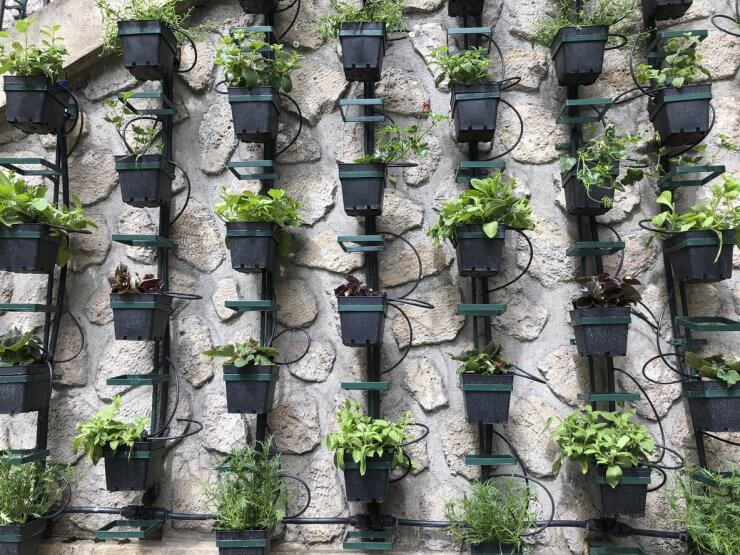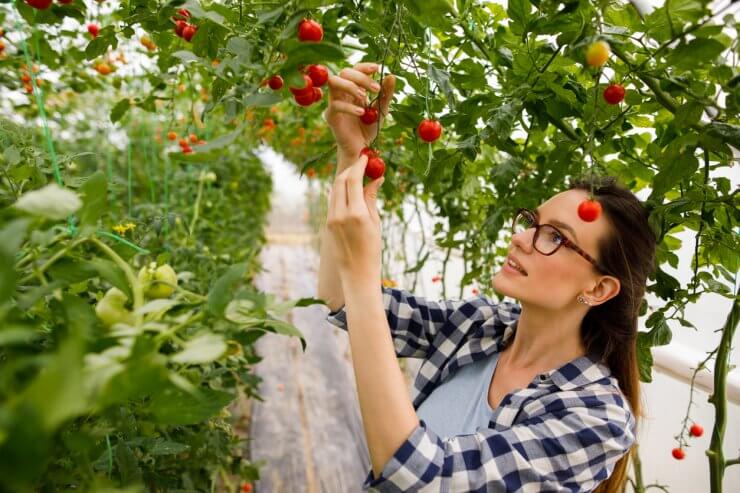
When most people think of gardening, they envision a sprawling area with raised garden beds and trellises and neatly grown lettuces all in a row. However, some of the most beautiful gardens I’ve seen use vertical gardening techniques to grow more upward than outward. But what is vertical gardening?
In its simplest form, vertical gardening could just be growing beans up a trellis; Or hydroponic gardening, which is often vertical. One mainstream type of vertical garden you’ve probably seen is an herb wall. There’s certainly no shortage of them on Pinterest or HGTV! Herb walls are trendy, and they’re organized to hang on a wall and grow vertically, versus in a raised garden bed or in the ground. The closer to my kitchen, the better, I say!
Vertical gardening could also be growing vined fruits and veggies up a fence, stake, trellis, teepee, or cage. Growing hanging strawberries would also be considered vertical gardening. The term vertical gardening is as literal as it gets.
Discover 7 top tips for growing, harvesting, and enjoying tomatoes from your home garden—when you access the FREE guide The Best Way to Grow Tomatoes, right now!
What is vertical gardening with trellises and pergolas?
One of the coolest ways to start vertical gardening, in my humble opinion, is with squash. I remember the day I learned that you could grow squash, and even pumpkins, vertically. If you’ve ever grown either, you know they take up a lot of horizontal space, so growing them vertically not only saves on square feet, but they look nicer and are easier to keep up with—especially when grown over a pergola or garden arch.
The most common way we usually see vertical gardening, though, is on a trellis, with vegetables and fruits that grow on vines like strawberries, muskmelon, beans, peas, grapes, cucumbers, melons, pumpkins, most squash, even eggplant and vining tomatoes.

You can, however, grow vertical gardens with any plants that can be grown in containers. I love to see how people garden when they have severely limited garden spaces. They hang planters on every inch of dividing walls and create these beautiful green, edible oasis. Some plants that grow well in more shallow containers like these are peppers, onions, lettuces, cabbage, kale, beans, even carrots. I tend to like in-ground gardening because it gives plants some resilience, but containers can work if you have time and patience to offer them.

What is vertical gardening good for? The perks of growing a vertical garden.
It seems like half of my gardening activities involve me keeping vegetables and leaves from touching the ground, so vertical gardening has easy advantages there. Here’s what I think are the most significant benefits of vertical gardening:
More Room to Grow: It might take investing in more equipment like trellises, cages, arches, or tunnels, but getting your veggies off the ground means you have a ton of extra space, especially if you’re using them to grow aggressive vines like pumpkin and squash.
Easier to Clean: The less you have to bend over and crouch in your garden, the more you can do. If you get a disease like powdery mildew on your squash, you can easily find the base of the leaves to trim, unlike regular gardening, where you might have to scavenge for it underneath other leaves and weeds growing around it.
Less Disease: Not only will any diseased plants be less likely to contaminate the soil for future gardening, but you’re less likely to get disease (and pests!) at all because your fruits and vegetables will be off the ground.
Better Looking: Fruits like apples and tomatoes are usually lovely and bulbous due to gravity. The act of hanging makes their shape more uniform. The same will happen to any squash or fruit grown vertically; they may even be longer than their ground-grown counterparts!
Bonus Shade: If your garden needs more shade, or even a little relief from the wind if you live on the coast, growing vertically up and around a trellis can help protect the vegetables and herbs underneath as long as they aren’t ones that require full sun.
You don’t have much to lose if you’re thinking of trying to grow vertically. Yes, it does generally take a little more equipment, but you’ll get paid back in a bounty of fresh food and a beautiful garden.
I would love to hear how you are using vertical gardening, and any tips and tricks you would like to share in the comments below!
Discover 7 top tips for growing, harvesting, and enjoying tomatoes from your home garden—when you access the FREE guide The Best Way to Grow Tomatoes, right now!




